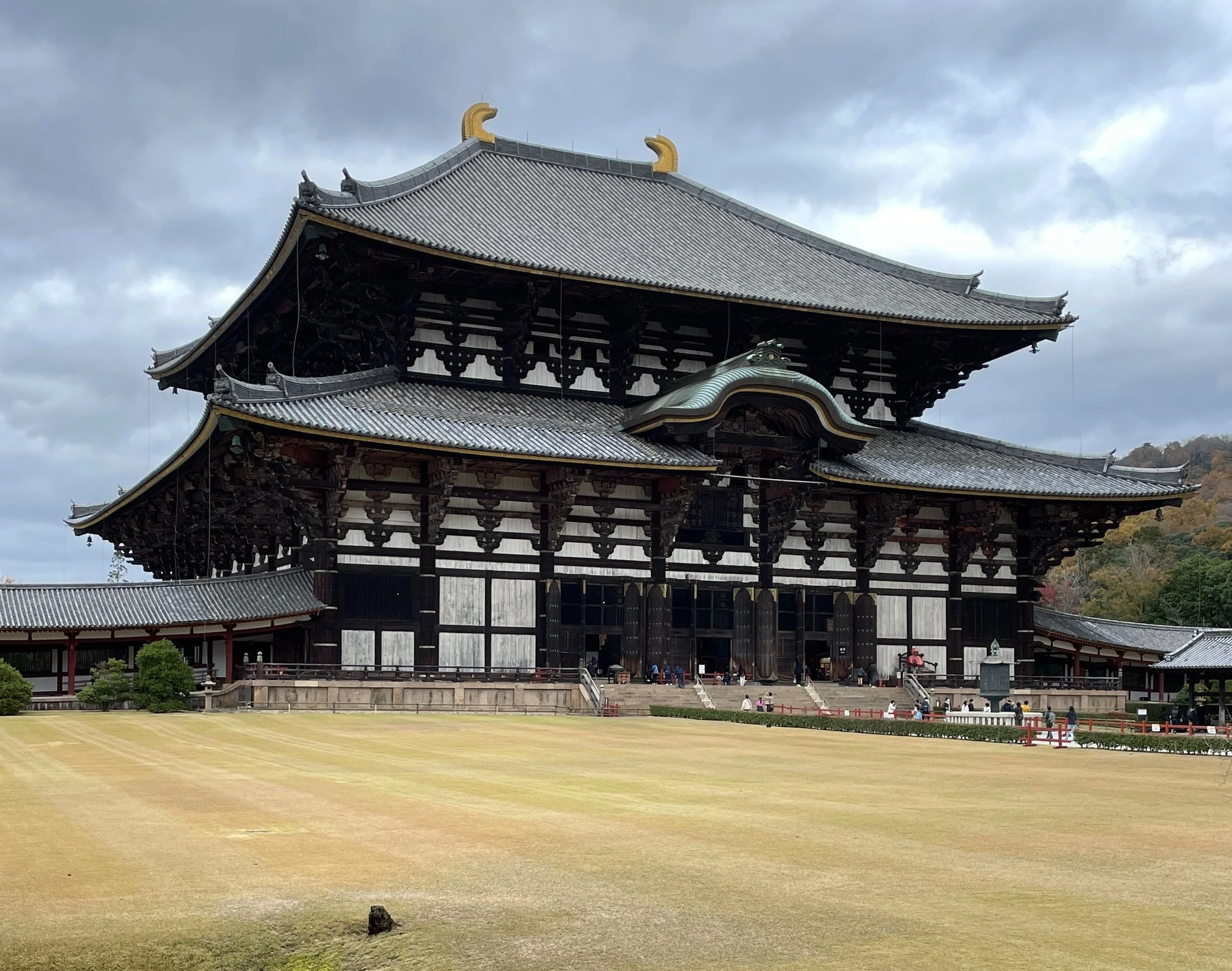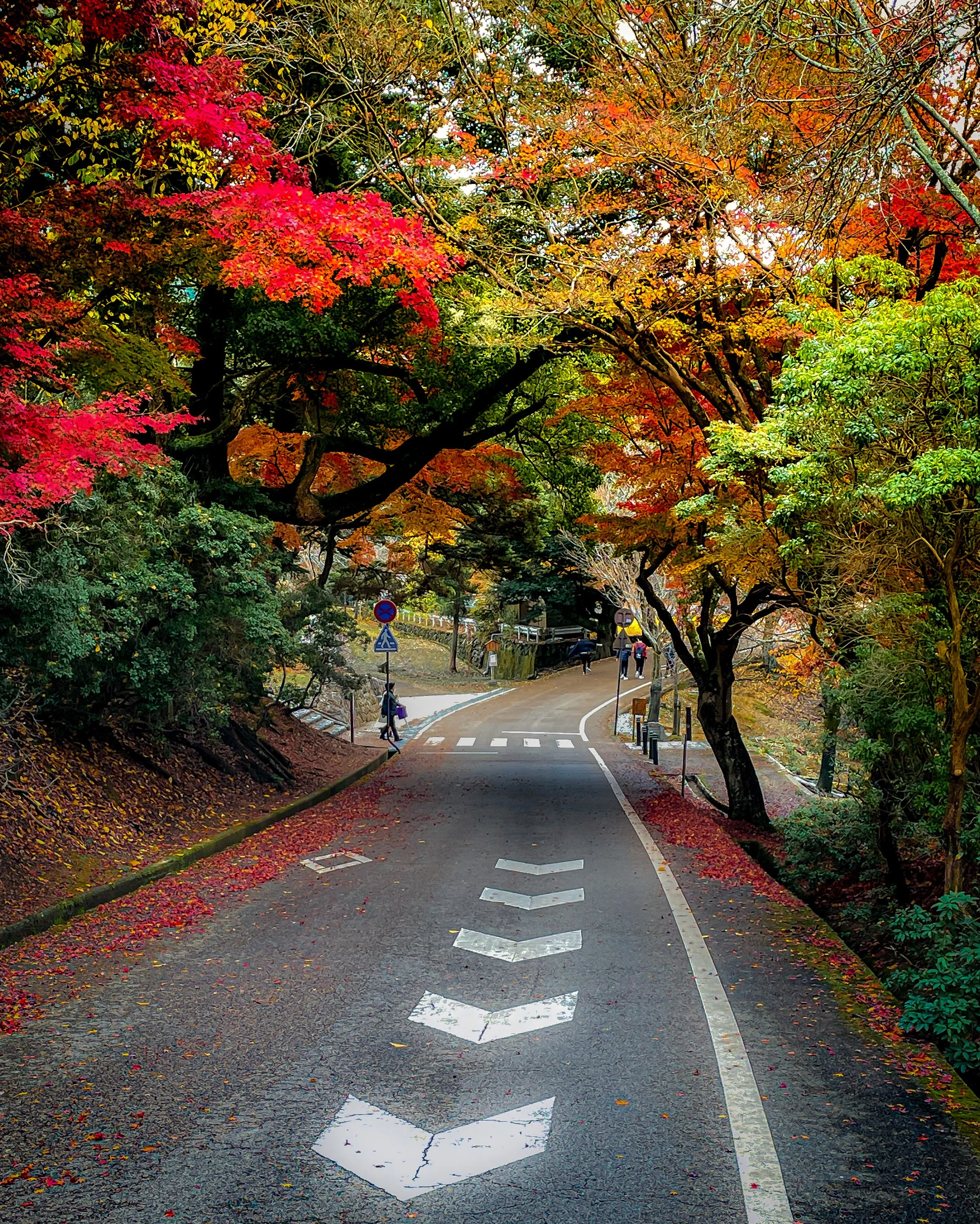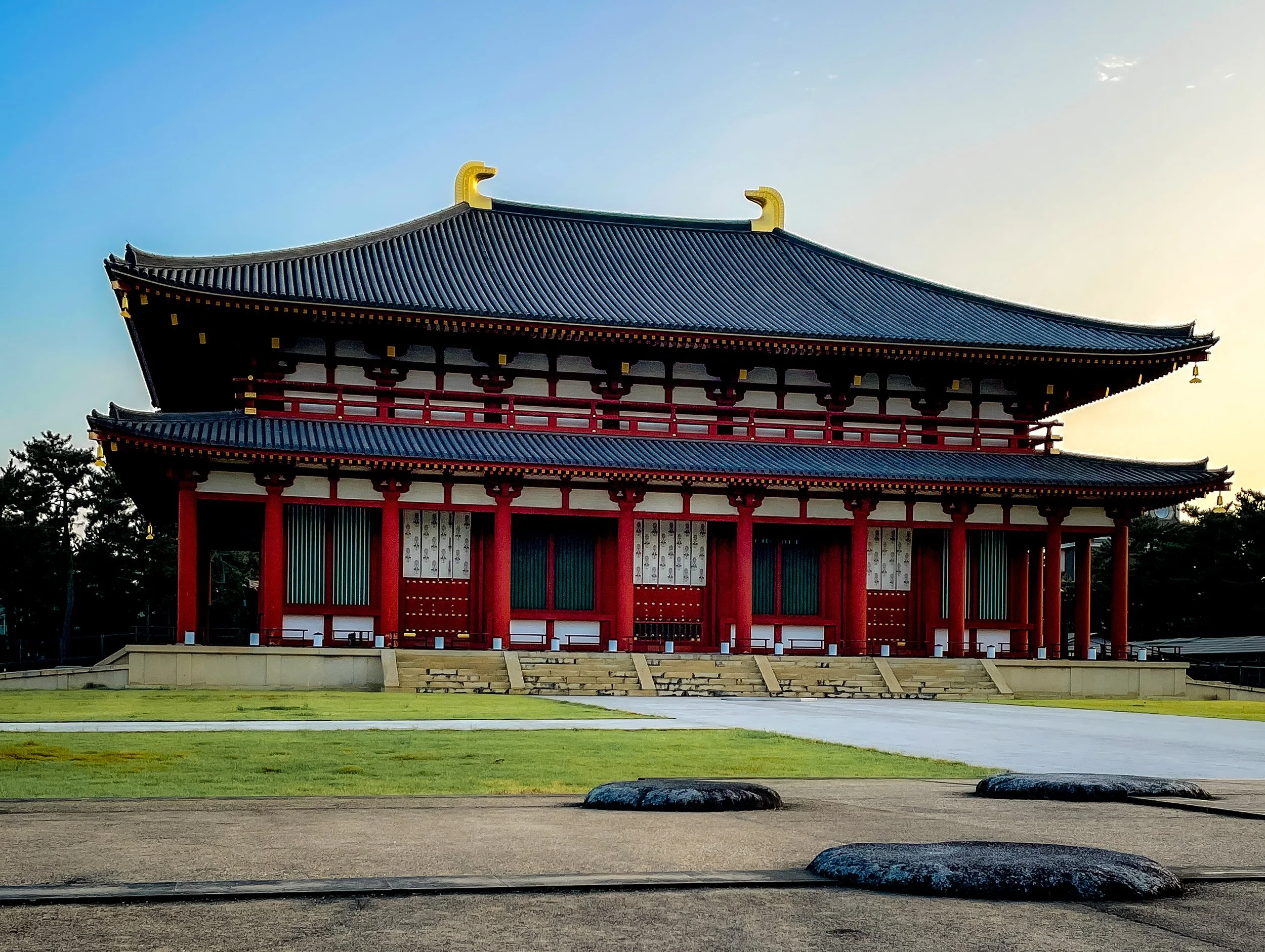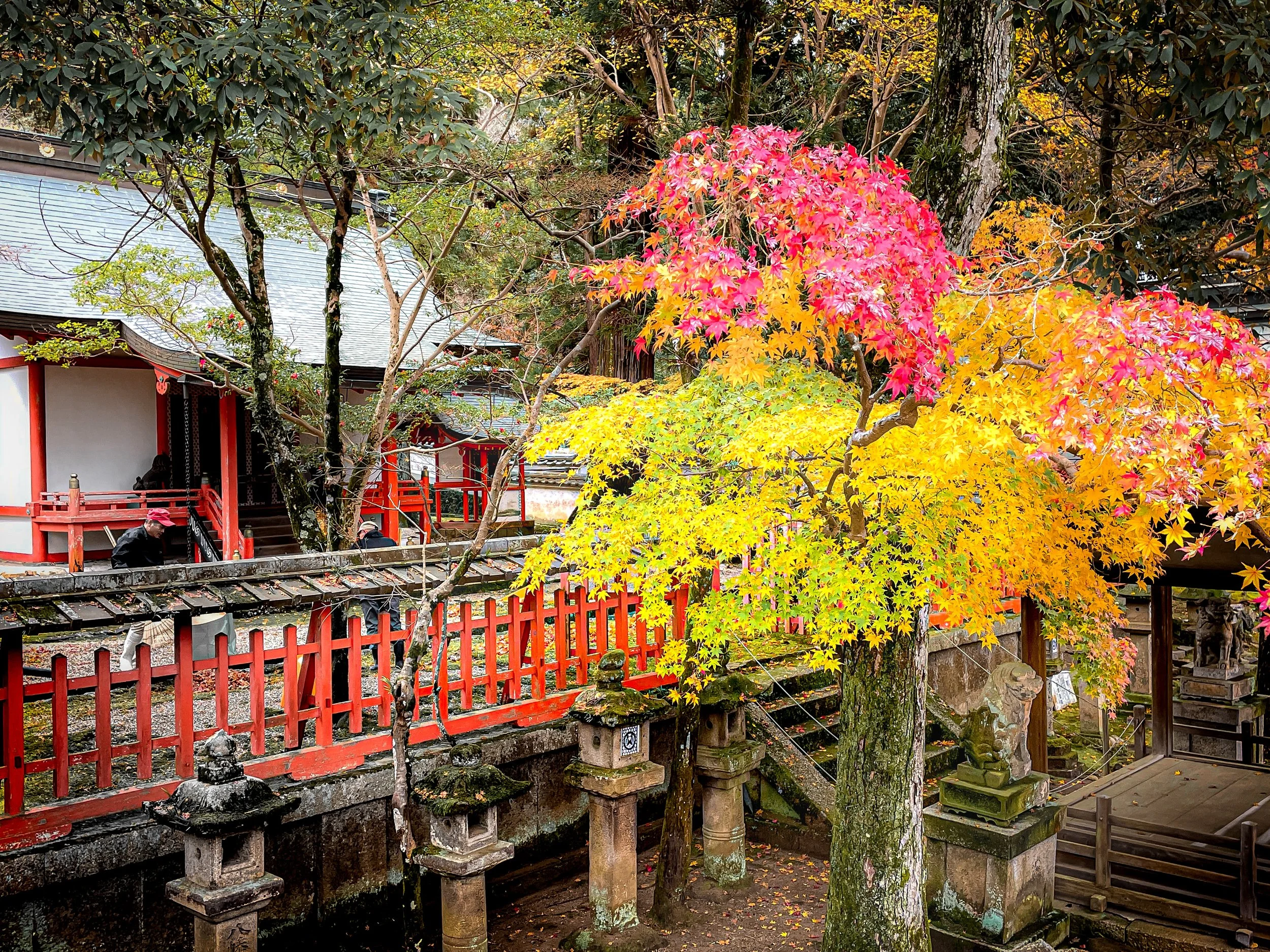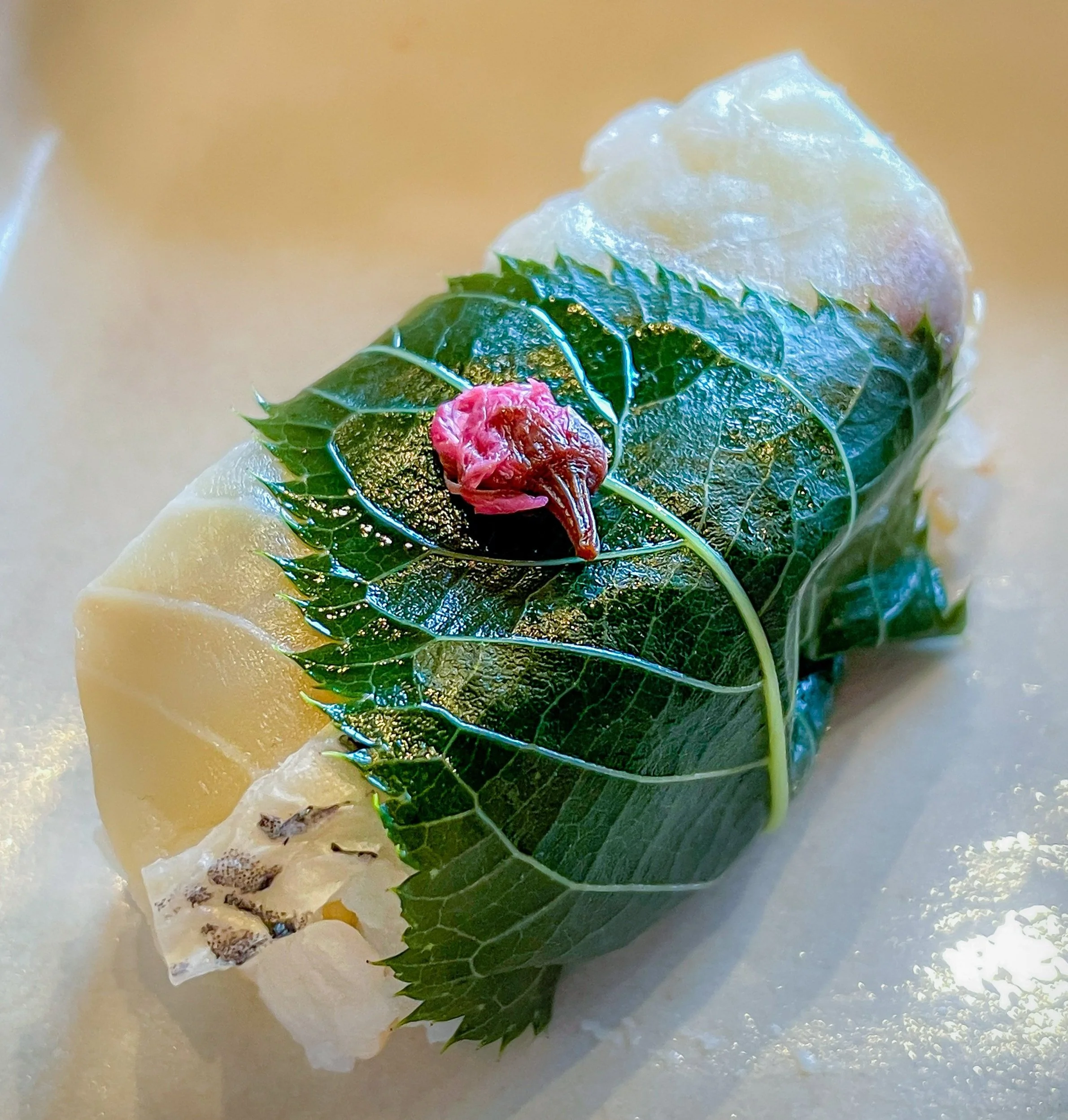Nara Tour: Exploring Japan's Ancient Capital
Nara, Japan's first permanent capital, is one of the most popular destinations in Japan’s Kansai region.
Amidst a living monument that showcases Japan’s history, culture & natural beauty, a self-guided Nara tour offers visitors well-preserved temples and shrines, friendly deer & lush greenery. It’s great for solo travelers, couples on a honeymoon, or anyone looking for a unique experience in Japan’s Kansai region.
This Nara Japan guide will help you plan an unforgettable visit, whether you're taking a day trip to Nara from Kyoto or Osaka or spending an overnight to explore the ancient capital’s many attractions.
Why Visit Nara? History, Beauty… and Deer
A Nara day trip from Osaka or Kyoto will showcase some of Japan's oldest & most significant cultural landmarks.
Why’s that? Well, Nara played a crucial role in shaping Japanese culture, art & religion. Many of its historic sites are UNESCO World Heritage Sites, offering visitors a chance to step back in time & experience Japan's ancient traditions firsthand.
More Than Just Deer: Nara's Historical Significance
To fully appreciate Nara, it's helpful to understand its role in Japanese history.
In 710 CE, the city became Japan's first permanent capital, known as Heijo-kyo. For 74 years, Nara was Japan's political and cultural center. This period saw rapid growth in art, literature and religion. Buddhism, introduced a century earlier, flourished under imperial support. Many of Nara's iconic temples were built during this time.
It was also in Nara that Japan's first historical chronicles were written. Even after the capital moved to Heian-kyo (modern Kyoto) in 784, Nara remained an important center of Buddhist learning and artistic production.
Today, Nara's historical legacy is evident in its well-preserved architecture and ongoing traditions. The Shosoin Repository, located on the grounds of Todaiji Temple, houses over 9,000 artifacts from the 8th century. Select items are displayed annually at the Nara National Museum, offering insights into the city's golden age.
The Allure of Nara: Tour by Day from Kyoto or Osaka
Nara’s compact size belies its outsized role in Japanese history and culture. As you wander its streets on your Nara tour, you'll find yourself tracing the footsteps of emperors, artists, and pilgrims who shaped the nation's identity.
The city's crown jewel, Todaiji Temple, is home to the largest bronze Buddha statue in the world (housed in one of the largest wooden structures in the world). Standing before this colossal figure, you can't help but feel a sense of awe. Todaiji is a 100% must on any Nara itinerary, whether you’re visiting Nara on a day trip from Osaka or Kyoto, or even half a day (head here first).
Natural Beauty: Visit Nara for Lush Greenery & an Oasis from City Bustle
Beyond its historic treasures, Nara is known for its verdant natural landscapes.
The city is home to beautiful parks, gardens & scenic views that showcase Japan's natural beauty in all seasons.
Nara Park isn’t just a little petting zoo with cute deer. On the contrary, it goes on for block after block, leading all the way up into the hills, through forests and to the Kasuga Taisha shrine.
Friendly Atmosphere
Nara has a relaxed, small-town feel that's a refreshing change on a day trip (or overnight) from neighboring Osaka and Kyoto.
The locals are known for their warmth & hospitality, making visitors feel welcome when exploring the city on your Nara tour.
Walking on a Nara Tour: Deer, Shrines, Lush Greenery
Nara Park serves as the city's green heart, a sprawling oasis where sacred deer (considered messengers of the gods, so remember that when they’re hitting you up for a bite to eat) approach visitors with a mix of curiosity and expectation. Feeding these gentle creatures is a rite of passage for anyone on a Nara tour, though be warned: they've perfected the art of the polite Japanese bow to charm treats from even the most reluctant hands.
Pro Tip: Don’t feed the deer human food! They might want that onigiri, ice cream cone or Strong Zero egg sandwich. But the only thing that’s safe for them to eat are the special treats sold around the Park, the ones that look like little crepes or waffles (known as shika senbei 鹿せんべい ).
As you move deeper into the park, the vermillion gates of Kasuga Taisha Shrine beckon. This Shinto sanctuary is a UNESCO World Heritage Site in large part due to its classical Japanese aesthetics. The pathways to and around the shrine are lined with thousands of stone lanterns that, when lit during festivals, create a scene of otherworldly beauty.
For those seeking a calmer retreat, Isuien Garden offers a pocket of tranquility. Its carefully curated landscapes use the technique of borrowed scenery, incorporating distant mountains and temples into its design.
Planning Your Nara Tour
Nara is beautiful year-round, but each season offers a unique experience:
Spring (March to May): Cherry blossoms bloom, creating picturesque scenes throughout the city
Summer (June to August): Rainy season from mid-June; hot & humid from mid-July
Fall (September to November): Beautiful autumn colors paint Nara in bold hues
Winter (December to February): Crisp, cool weather & occasional light snowfall create a lovelyatmosphere
Getting to Nara
From Kyoto
A Kyoto to Nara day trip is easy & convenient. Take the JR Nara Line from Kyoto Station to JR Nara Station (about 45 minutes) or the Kintetsu Line from Kyoto Station to Kintetsu-Nara Station (about 35 minutes).
From Osaka
For a Nara day trip from Osaka, take the JR Yamatoji Rapid Service from Osaka Station to JR Nara Station (about 50 minutes) or the Kintetsu Nara Line from Namba Station to Kintetsu-Nara Station (about 40 minutes).
Must-See Attractions on a Nara Tour
Todaiji Temple
Home to the world's largest bronze Buddha statue, Todaiji is a marvel of Japanese architecture & spirituality. The massive wooden structure housing the Buddha is itself an engineering feat.
Nara Park and the Sacred Deer
Nara Park is the heart of the city's tourism & home to over 1,000 free-roaming deer. Considered messengers of the gods, these friendly creatures are a symbol of Nara & a highlight for many visitors on a Nara tour.
Kasuga Taisha Shrine
This vibrant vermilion shrine is famous for its bronze & stone lanterns, which are lit twice a year during special festivals. The approach to the shrine through a forest of towering cedar trees is particularly atmospheric.
Kofukuji Temple
Originally built in 710, Kofukuji is home to a five-story pagoda that's a symbol of Nara. The temple's museum houses an impressive collection of Buddhist art.
Isuien Garden
This tranquil Japanese garden offers a peaceful retreat from the bigger tourist sites. Its carefully designed landscape uses borrowed scenery to create beauty.
Off-the-Beaten-Path Spots for Nara Sightseeing
While Nara’s heavy hitters of Kasuga Taisha, Todaiji and Kofukuji are all musts, and of course there’s the Nara Deer Park itself, you’ll find plenty more in Nara for your travels.
Naramachi Historic District
Wander the narrow streets of Naramachi, lined with traditional machiya (townhouses). Many old buildings here have been converted into shops, cafes & museums. Here, traditional crafts are still practiced, and tiny museums showcase everything from calligraphy to sake brewing.
Gangoji Temple
One of the oldest temples in Japan, Gangoji is often overlooked by many on a Nara tour, but offers an authentic experience of Japanese Buddhism.
Mount Wakakusa
For a different perspective on your Hara tour, consider an early morning ascent of Mount Wakakusa. As the sun rises, painting the sky in hues of pink and gold, the entirety of Nara unfolds below. It's a view that contextualizes the city's layout; the gentle slopes are perfect for a picnic.
Nara Itinerary Ideas
One-Day Nara Tour
If you're short on time, focus on the highlights:
Start at Kofukuji Temple
Walk through Nara Park, feeding the deer along the way
Visit Todaiji Temple
Explore Kasuga Taisha Shrine
End with a stroll through Naramachi
Two-Day Nara Itinerary
With more time, you can dig deeper into Nara's attractions:
Day 1:
Arrive from Osaka or Kyoto (1 hour train ride)
Begin at Kofukuji Temple
Explore Nara Park & Todaiji Temple
Visit Kasuga Taisha Shrine
Relax in Isuien Garden
Day 2:
Start with a morning hike up Mount Wakakusa
Visit Gangoji Temple
Spend the afternoon in Naramachi
Continue on to Kyoto or Osaka (1 hour train ride)
Savoring Nara: Must-Try Traditional Nara Dishes
Don't miss these local specialties on your Nara tour:
Kakinoha-zushi: Sushi wrapped in persimmon leaves
Narazuke: Vegetables pickled in sake lees
Chagayu: A savory rice porridge served for breakfast
The city's signature dish, kakinoha-zushi – sushi wrapped in persimmon leaves – is a delightful twist on sushi you may have had in Osaka, Kyoto or elsewhere. For a more immersive experience, seek out a local izakaya where you can sample narazuke, vegetables pickled in the lees of sake. These preserved morsels pack a punch of umami that pairs perfectly with a cup of locally brewed sake.
Tips for a Smooth Nara Tour
Transportation Options
Nara tours are ideal because the city is compact & walkable; for longer distances consider:
Renting a bicycle
Using the Loop Bus, which connects major tourist sites
Taking local buses for more remote attractions
Cultural Etiquette
Bow when greeting people – and the Nara deer! (but the latter will want food in return)
Remove shoes before entering temples or traditional buildings
Be respectful when feeding or photographing the deer
Nara's charm is sure to leave a lasting impression. As you plan your travels in Kyoto and Osaka, consider adding the ancient capital of Nara to your itinerary for a truly memorable experience.
The Nara Effect: More Than Sightseeing, Memories of a Uniquely Japanese Experience
What sets Nara apart is not just its historical significance or its architectural wonders, but the way it makes history feel immediate and relevant.
Whether you're taking a day trip from Kyoto or Osaka, or spending the night, a Nara tour offers a laid-back, highly unique experience that you’ll remember long after you’ve left Japan.
Want to know more about how Japan Travel Pros can help with your Nara tour and overall Japan itinerary? Why not schedule a free consultation with us:
Enjoy your time in Nara and happy travels!
FAQs for Your Nara Tour – Day Trip from Kyoto/Osaka or Nara Overnight
How much time do I need for a Nara tour? You can see the main highlights on a day trip to Nara from Osaka or Kyoto. Or, you can leave Osaka, spending the night in Nara and then go on to Kyoto the next day; this allows for a more relaxed pace & the chance to explore off-the-beaten-path attractions (plus Nara in the early morning is truly special!).
How close can I get to the deer in Nara Park? The deer are accustomed to humans and will often approach visitors. While feeding and petting are allowed, remember they're wild animals. Respect their space and follow park guidelines for a safe interaction.
What's the best way to get around on a Nara tour? Nara is very walkable, but for longer distances, the Loop Bus is convenient for tourists. Renting a bicycle is also a great option for exploring the city.
What's a unique souvenir from Nara? Consider picking up a pair of Nara fude (writing brushes). These high-quality calligraphy tools have been produced in Nara for over a millennium and make for a practical yet culturally significant memento.
What should I wear when visiting temples in Nara? Dress modestly, covering your shoulders & knees. Comfortable walking shoes are a must, as you'll be doing a lot of walking & may need to remove them when entering certain buildings.
Is a Nara tour suitable for solo travelers? Absolutely. Nara's compact size, excellent public transportation, and generally safe environment make it ideal for solo exploration. Many sites offer English information, making navigation straightforward.
Are there any nighttime activities for a Nara tour? While Nara is quieter at night compared to larger cities, several temples offer evening illuminations during specific seasons. The lantern festivals in February and August are particularly magical experiences.


